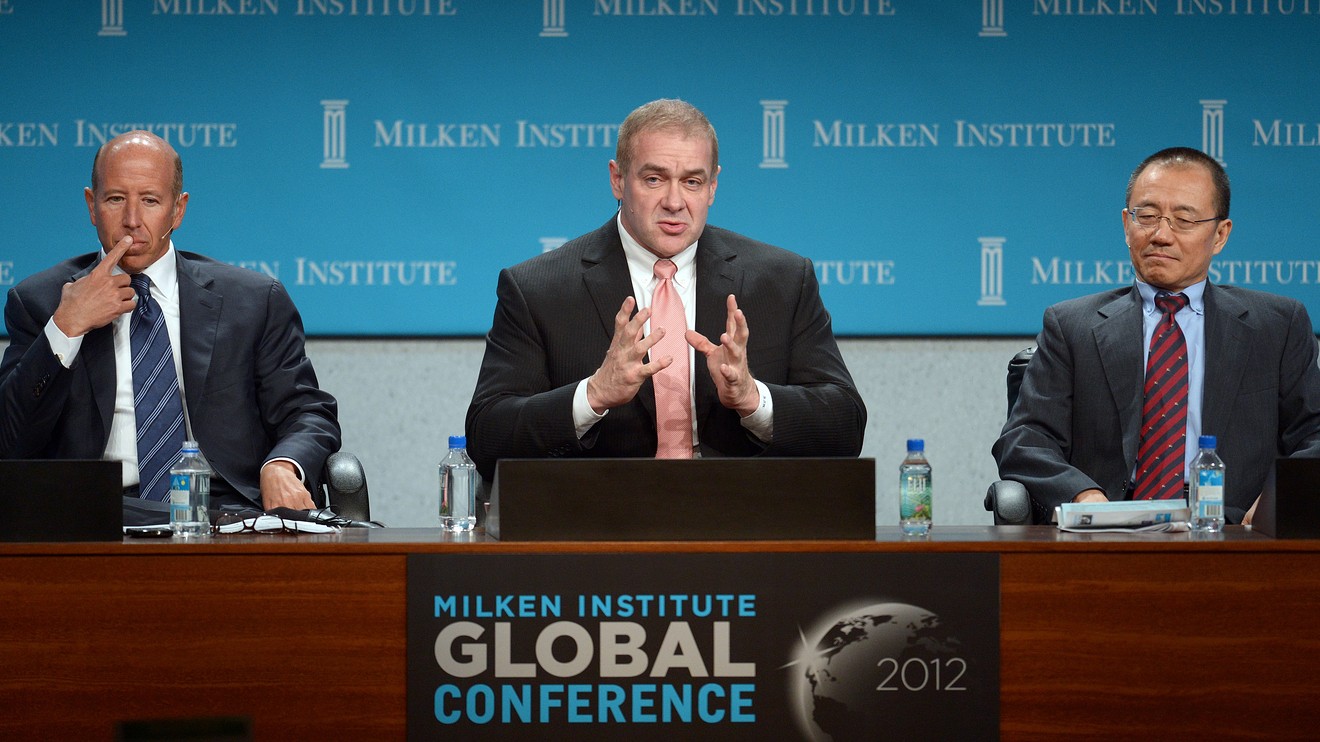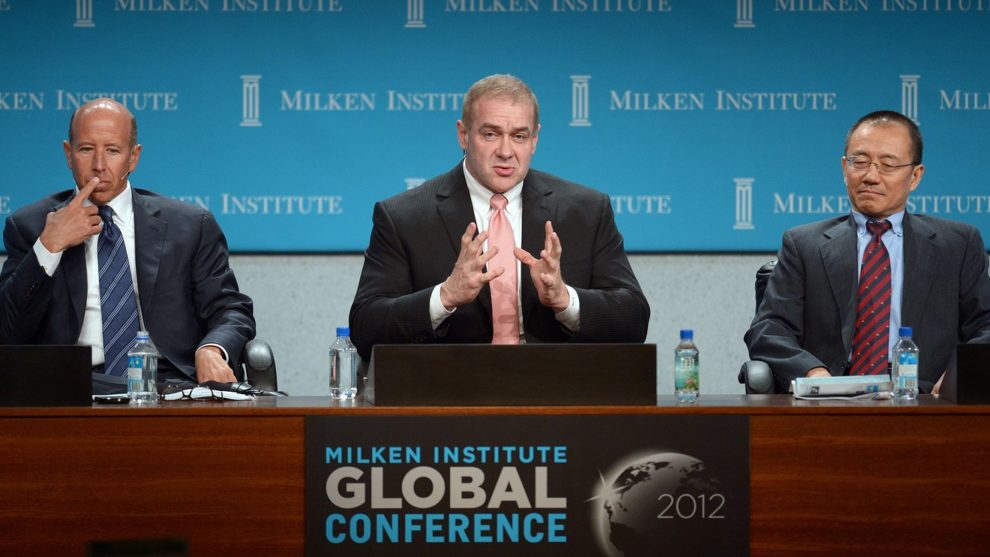
Why is Scott Minerd seeing shades of 1998 in today’s stock market?
The chief investment officer at Guggenheim Partners says the Fed has likely managed to extend the U.S. economic expansion in its record-setting 11th year but warns that problems are lurking in a market that has become accustomed to freely flowing liquidity in the financial system.
Easy-money policies (and, doubtless, an easing of China-U.S. trade tensions) have thus far helped put the Dow Jones Industrial Average DJIA, +0.34% on track to gain more than 22% in 2019, while the Nasdaq Composite Index COMP, +0.23% has climbed nearly 35% and the S&P 500 index SPX, +0.09% is on pace for a roughly 29% return, which would mark its best annual gain since 2013.
Read: MarketWatch’s daily Market Snapshot
Those rich returns come as the benchmark 10-year Treasury note’s TMUBMUSD10Y, -0.45% yield stands at 1.92%, down from around 2.80% a year ago and tighter than its average yield of 2.402% over the past decade. Bond yields fall as prices rise.
Minerd, in a fourth-quarter market outlook set to be released later Monday, says recent rate cuts by the Jerome Powell–run Fed have established an environment that’s similar to one in 1998 when the central bank delivered a series of rate cuts that produced a “liquidity-driven rally that caused the Nasdaq index to double within a year before the bubble finally burst.”
In 2019, the Fed at three successive meetings cut target interest rates by quarter-percentage-point magnitudes, similar to periods in 1995–96 and 1998 when it cut rates by a total of 75 basis points.
‘Taken together, conditions today are characteristic of those that precede a Minsky Moment, in which excessive speculation and taking on additional credit risk during stable markets leads to a tipping point that leads to a period of instability.’
Minerd explains that a so-called Minsky moment may be at hand. Economist Hyman Minsky, who died in 1996, espoused a view that a period of distortions in the financial system eventually ends very badly.
So, how long can this current phase of prosperity for markets and the economy last?
The Guggenheim investment officer says it isn’t clear. Instead, he references a quote often attributed to famed economist John Maynard Keynes stipulating that “the market can remain irrational longer than you can remain solvent.”
Minerd explains further: “Thus, while the Fed has prolonged the expansion, the reality is that it is also the start of silly season in risk assets. By heeding the lessons of the past we continue to position defensively so that we can preserve capital and be prepared to take advantage of opportunities when asset prices inevitably reset.”
The Guggenheim manager says one clear sign that markets are on the verge of cracking resides in the spread between high-yield debt and relatively safer government debt, with tightening spreads indicating that investors are more willing to take on greater risk for comparably less compensation in the form of yields.
“Investors are not being adequately compensated for the outsize risk they are taking on in the current market,” Minerd says. Notably, in his view, “risks are building in various areas of the fixed-income credit markets, particularly in corporate credit.”
“We continue,” he writes, “to focus on income and capital preservation in a market where the risk/reward trade-off looks unattractive in many credit sectors.”
Minerd’s comments come as Vanguard’s global chief economist and head of investment strategy, Joe Davis, has reiterated a cautionary perspective that considers stocks vulnerable to a correction next year.
“Financial markets run the risk of getting ahead of themselves,” the Vanguard strategist told Bloomberg News, noting that he foresees a 50-50 chance of a correction in 2020, as compared with a consensus estimate of 30%. A correction is traditionally defined as a drop of at least 10% from an asset’s recent peak.
Check out: Here’s how the Dow and S&P 500 perform in years after they ring up gains of 20%
Worth a read: ‘I’m 100% in equities. … You’re never going to make enough money if you have 40% of your money in bonds,’ says CNBC anchor
Corrections & Amplifications: An earlier version of this report incorrectly referred to Hyman Minsky’s nationality. The economist was born in Chicago.






